Cattlemen Tell EnviroNews Ranchers Want Mexican Wolves Killed, Despite Being Paid for Livestock Losses
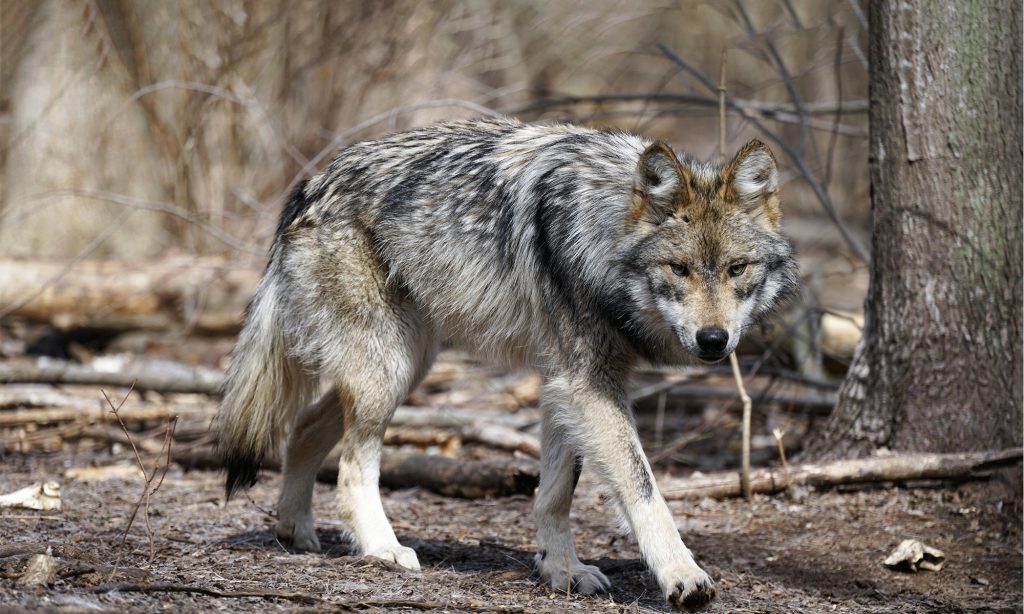
(EnviroNews Arizona) — Parts of eastern Arizona are a conflict zone, as a 100-year war between ranchers, conservation groups, government agencies, and the endangered Mexican gray wolf (Canis lupus baileyi) rages on. The rarest subspecies of gray wolf, also known as “el lobo,” is doing what wolves have always done in their native territories: they hunt and eat animals weakened by misfortune, time and nature itself. But ranchers who sell their cows, sometimes for $1200-$1500 per animal, aren’t happy when someone’s future hamburger becomes a wolf’s dinner.
Even though the government will compensate ranchers for cows killed by wolves, a new survey reveals most cattle farmers feel el lobo’s reintroduction into the area is a threat to ranching – and their livelihoods.
“[Ranchers] realize that [wolves are] there and they’re there to stay now,” Jerome Rosa, Executive Director of the Arizona Cattle Growers’ Association, which funded the survey, told EnviroNews in a phone interview. “They just have to do the best they can to try and manage the situation and try to do what they can to be able to live, you know, cohesively. But if they had a preference, [absolutely they] would like to not have that apex predator out there.”
Back From the Brink of Extinction
When Rosa said, “out there,” he is referring to the southwestern United States – part of the Mexican wolf’s indigenous turf. Early in the 1900s when the livestock industry began booming, the federal government hired trappers to eradicate all wolves – and they were nearly successful in that task with el lobo.
“This genetically [and] morphologically unique animal came about as close to extinction as any creature can get without actually going over the brink,” Michael Robinson, a senior conservation advocate at the Center for Biological Diversity, told EnviroNews.
And how close is “close?” U.S. Fish and Wildlife Service (USFWS) official Stephen Guertin told a congressional subcommittee “the Mexican wolf was all but eliminated from the wild by the 1970s due to extensive predator control initiatives.” According to the Arizona Game and Fish Department’s (AGFD) website, Mexican wolves had once disappeared completely from Arizona and New Mexico.
But when the Endangered Species Act (ESA/the Act) passed in 1973, these critters finally received some appreciation. USFWS hired trappers again — this time to capture live wolves that could still be found in Mexico, in an effort to save the species from total annihilation. The agency was only able to find and capture five wild wolves; four males and one female. With time running out, USFWS took those specimens and launched a captive breeding program.
In 1998 el lobo caught a break and received an invitation to return home to the Southwest and 11 were released into the Blue Range Mexican Wolf Reintroduction Area in Arizona.
“They’re part of the natural ecosystem,” Robinson said. “They’re a beautiful, intelligent social animal that helps maintain balance, and they deserve to be there.”

The USFWS’ website hails the breeding program as a victory: “Missing from the landscape for more than 30 years, the howl of the Mexican wolf can once again be heard in the mountains of the southwestern United States.” Despite the agency’s victory dance, ranchers certainly were not out holding “welcome home” signs. The conflict zone reemerged — as did the wolf killings.
Money Can’t Buy Wolves Love
To help ease concerns, ranchers have been compensated for depredations since the wolves were first reintroduced in 1998 and in 2015 the State of Arizona Livestock Loss Board was formed. Ranchers can submit claims to the board for depredations when they can prove Mexican wolves most likely killed their animals. According to the agency’s most recent annual report ranchers have been paid more than $143,000 over the last few years.
But Rosa told EnviroNews these reimbursements still can’t buy the wolves love. He said the number of cattle they kill exceeds what ranchers claim as a loss:
Some [ranchers] just don’t want to deal with the red tape. They don’t want to deal with the paperwork. Or, when they find these carcasses, they’re too far gone. And remember: these cattle are out there in these vast, vast landscapes in really, really rugged terrain, and so often, when they do find a depredation, there’s nothing there to investigate. You know, there’s not enough to be able to prove it was a depredation. So, [ranchers] just don’t say anything. It’s like, “Well, you know, we took a hit on that.”
Rosa added that there’s no way for cattlemen to calculate losses for livestock that die from exhaustion and dehydration after being chased by wolves, or cows that get stressed out, thin, and don’t reproduce.
David Parsons, the wildlife biologist who led USFWS’ effort to reintroduce the Mexican wolf into the Southwest, told EnviroNews he’s heard those claims, but not the veracity of them. “Open range cattle die for many reasons other than predation or harassment by predators, such as weather extremes, disease, toxic plants, and even lightning strikes,” he refuted.

Parsons is now a science advisor for the conservation group Project Coyote. He said figuring out an exact cause of a cow’s death is arduous. “It would be very difficult to tease out the significance of mortality caused by predator harassment compared to all other causes of mortality.”
Natural Born Killers?
No one disputes that wolves are natural born killers. But Rosa claimed there are far more wolves out there than official counts reflect. “As the wolf populations increase, the cattle populations will decrease. I think that’s tragic,” he said.
Rosa added the more the packs grow, the more food they will need. “And unfortunately, the realism of wolves is they don’t just kill when they’re hungry. They kill for sport,” he said. “That’s what they do. You know, they are… that’s what they do. I mean, they’re killers.” But many experts dispute that and say wolves do not kill for the fun of it.

“They kill to eat,” Greta Anderson, Deputy Director of the Western Watersheds Project told EnviroNews. “When humans find animals that have been killed by wolves but are uneaten, they should assume the carcasses haven’t been consumed yet, as animals will routinely return to kill sites and continue to feed off a carcass as long as they can.”
Regarding the numbers of wolves, federal and state officials have boots on the ground, the AGFD even pays five full-time biologists to help manage and tabulate the numbers. Currently, there’s a minimum of 76 Mexican gray wolves in the state and about 163 total in the Southwest. So, even after over two decades of “recovery” in the wild, the current number of lobos is far from the estimated 3000-4000 that roamed the U.S. in the early 1900s.
Currently, wolf tracking is done in many ways: about half the estimated population wears radio collars, others are counted on the ground, in the air, and even by conducting howl surveys where biologists listen for wolves’ return howls.
“I don’t think the cattle growers have a basis for contending that the numbers are substantially higher than announced,” Robinson said. “If there were significantly more wolves on the landscape than the interagency field team now contends, wouldn’t those wolves be breeding with each other, and wouldn’t their numbers grow to the point that their presences couldn’t be denied by anyone?”
Wolf Depredation Prevention
What about just deploying measures to keep wolves away from cows, so fewer end up getting eaten? According to the cattle association’s survey, some feel “spending on preventative practices can be large relative to returns.” And ranchers’ willingness to pay to avoid depredations may be an area they’ll study in the future.

Rosa said prevention can be challenging, expensive and more assistance is welcome, adding, “I think the ranchers would like to have all the available tools in their toolbox to be able to manage the situation.”
But in addition to reimbursements for depredations, there’s also money out there to help ranchers pay for prevention. One example: the State of Arizona Livestock Loss Board slated $110,000 to develop effective methods of preventing wolf and cattle interactions.
At present, preventative tools like tracking collars, that help to alert ranchers when wolves are in the area, are being used along with blinking lights, electric fences, and range riders. The downside, Rosa said, is that batteries burn out, and some prevention is burdensome.
“All of these non-lethal measures just work for a short period of time,” he contended. “These wolves are extremely, extremely intelligent, and they get immune to those systems, and so then you constantly have to be changing.”
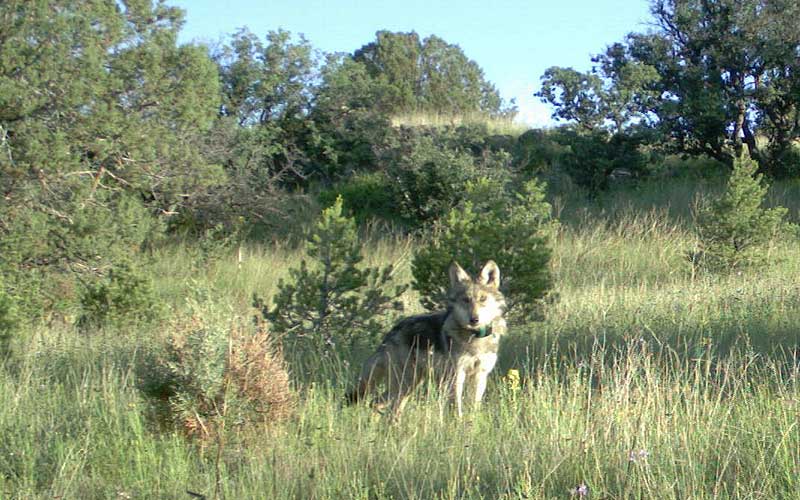
One solution Rosa offered is to limit the wolf population to a “manageable number” and kill problem wolves. “In areas where we’re having problems, then we need to go to lethal take on those packs,” Rosa told EnviroNews.
“You mean kill the wolves?” EnviroNews reiterated for clarity. “Yes. Yes,” Rosa asserted. And sometimes ranchers ask for just that and the federal government obliges.
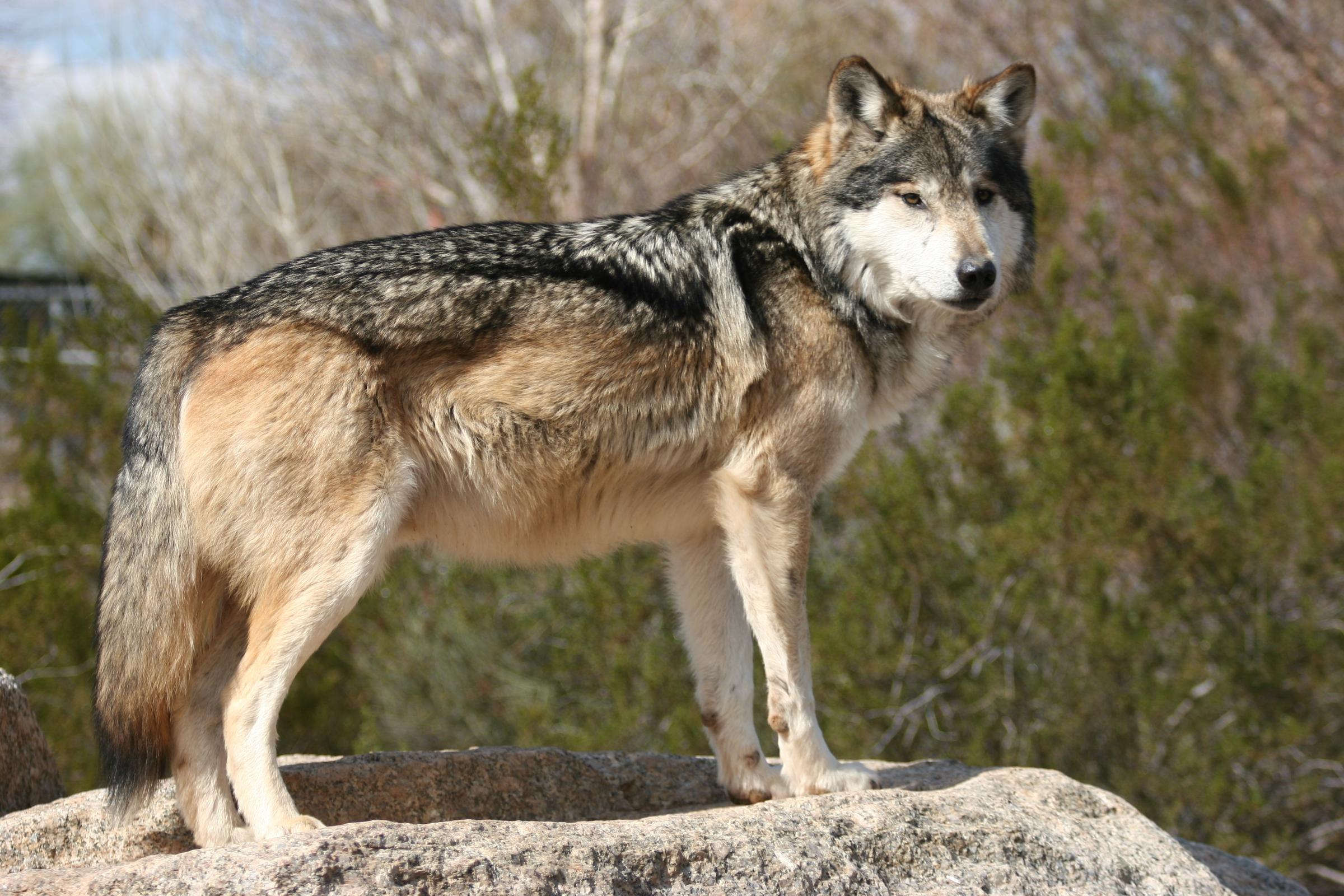
Experts tallied reports for EnviroNews and found that since Mexican wolves were reintroduced to the Southwest the feds have killed about 21 lobos. The most common reason was for livestock depredations.
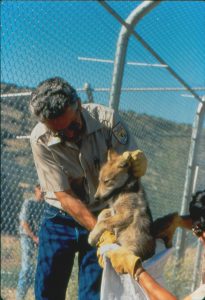
Conservationists insist killing this already beleaguered species is not the answer. Instead, they say regulators should require ranchers to use more preventative measures and remove the remains of dead cattle immediately, so the scent doesn’t attract predators. Furthermore, they insist there’s plenty of money out there to help ranchers outsmart even the craftiest of wolves.
“The government has asked nothing of the ranchers — at least required nothing,” Robinson continued. “They have asked nicely at times, you know, ‘Would you mind doing this?’ And sometimes the answer is ‘yes’ and sometimes the answer is ‘no.’”
Parsons claimed some wolves are being killed in “cryptic poaching” — meaning poaching that goes undetected. “Uncollared wolves killed in remote areas are rarely discovered by agency biologists, and the same is true for collared wolves when the poacher immediately disables the collar,” he added.
What’s at Stake?
Rosa told EnviroNews that if something isn’t done to curb Mexican wolf numbers, more ranchers will hang up their hats. Fewer cattle, he said, means less meat at the grocery store and more wildfires because ungrazed pastures provide fuel for flames to spread. “Killing wolves will allow [for] cattle, [and for] more people to be able to continue having cattle, out there to graze these spots,” he asserted.

But in addition to the many tangible issues, palpable on the ground between ranchers and conservationists, the more esoteric factor of global warming looms. Scientists say the rising trend of massive wildfires in the West is fueled in part by methane emissions from livestock and the agricultural sector at large.
Robinson told EnviroNews responsible, proactive ranchers should tap into the resources available to help keep afloat, but pulled no punches when emphasizing the free marketplace should determine the better mousetrap:
As for whether ranchers will go out of business due to depredations in the absence of wolf killing, that very much depends. Not all business ventures in the United States are destined to succeed, even when subsidized. The fact that some ranchers refuse to take measures to protect their stock would seem to make them less likely to stay in business.
Parsons agreed. “If a heavily subsidized livestock production business cannot afford to protect its primary asset (cows) by methods such as confining cows to pens for calving and hiring range riders to monitor and control their whereabouts on the landscape, then perhaps it is not a viable or appropriate business enterprise,” he said.
This Land is Not Your Land
Finally, EnviroNews asked Rosa, “Do you see the Mexican wolf as a vital part of the ecosystem? Should the species be there [at all]?” His answer: Nope. He concluded:
I don’t see it as a vital part. It wasn’t here for many, many years after they had been hunted down in the past. Now, some will say, “OK, they take care of, you know, sick animals, they’ll put them down.” They’re non-discriminatory. So, they’re not just taking [out] the weakness of a species. They take these animals down just for sport. I mean, it’s just what they do. And so, I understand, you know, the wolf advocates reasoning that they use — that they try to use. But, [it’s] not logical, and it’s not realistic. But, you know, I understand that that’s their position.
That’s something that enrages conservationists who say the wolves aren’t into sport killing and were there first. “The livestock industry has sought to transform the entire ecosystem of the Southwest… they see the wolves as the worst part of the ecosystem that they want to eliminate,” Robinson said.
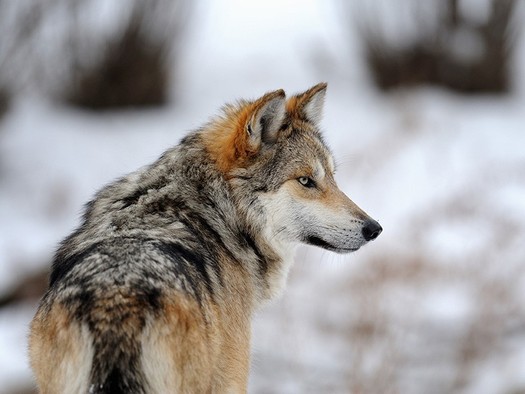
So, the 100-year war between ranchers, cattle, wolves, conservationists and government agencies continues. Many battles ensue, no side declares any winners, but all have the instinct to keep fighting.
OTHER GREAT REPORTS ABOUT MEXICAN WOLVES FROM ENVIRONEWS
Governments in CO/UT/NM/AZ Deliberately Derailed Mexican Wolf Recovery, Documents Reveal (Investigative Report)
(EnviroNews Colorado) – After decades of deliberation the final revision of the U.S. Fish and Wildlife Service’s (USFWS) Mexican Wolf Recovery Plan (the Plan) was released at the end of November, but former USFWS officials tell EnviroNews it strays far from scientists’ minimum recommendations for recovery of the…
Breaking News: Wildlife Orgs Sue Trump Admin for Failing to Protect ‘El Lobo,’ the Mexican Wolf
(EnviroNews Nature) – Environmental organizations filed a lawsuit on January 30, 2018, in U.S. District Court in Arizona against the U.S. Fish and Wildlife Service (USFWS), alleging the agency violated the Endangered Species Act (ESA) by ignoring science relevant to the recovery of the beleaguered Mexican wolf (Canis…
Victory for Mexican Gray Wolves: Court Stops Injunction, Allows Releases from Captivity to Proceed
(EnviroNews Nature) – Denver, Colorado – The U.S. Fish and Wildlife Service (USFWS) can continue to release Mexican gray wolves (Canis lupus baileyi) from captivity into the wild after the 10th Circuit Court of Appeals overturned an injunction halting the program on April 25, 2017, which conservationists say…
USFWS Hiring ‘Wolf Killer’ to Trap Endangered Mexican Gray Wolves and Greens Are ‘Furious’
(EnviroNews Arizona) – The U.S. Fish and Wildlife Service (USFWS) has announced it intends to hire known wolf exterminator William Bennett Nelson of Bill Nelson Wildlife Control to trap and radio-collar endangered Mexican gray wolves (Canis lupus baileyi) in New Mexico and Arizona, causing “fury” amongst environmental and…
Big Win for ‘El Lobo’: Fed. Court Strikes Down ‘Egregious’ Management Rule For Mexican Wolves
(EnviroNews Nature) – In a win for nature fans, the United States District Court in Arizona struck down a U.S. Fish and Wildlife Service (the Service/USFWS) management rule for the endangered Mexican grey wolf (Canis lupus baileyi), finding that it “provides only for short-term survival of the species…
RECENT AND RELATED
How Painting Eyes on Cow Butts in Botswana is Saving Cattle, Lions, Leopards and Livelihoods
(EnviroNews World News) – Okavango Delta, Botswana – In the wild, the Brazilian frog (Physalaemus nattereri) uses eyespots to fake out and deter predators and holds a toxic gland as a secondary line of defense. The foureye butterflyfish (Chaetodon capistratus) has a false eye near its tail, which scientists…
OTHER ENVIRONEWS REPORTS ON WOLVES
Wyoming Wolves Stripped of Endangered Species Act Protection – Shoot-on-Sight Policy Restored
(EnviroNews Wyoming) – Gray wolves (Canis lupus) will no longer be protected under the Endangered Species Act (ESA) in the state of Wyoming. That was the ruling by the U.S. Court of Appeals for the District of Columbia Circuit, on March 3, 2017, which also happened to be…
Federal Government Sued For Killing Wolves in Oregon
(EnviroNews Oregon) – Five environmental groups filed a lawsuit on February 3, 2016, in U.S. District Court against the federal agency Wildlife Services, over what they say is the illegitimate killing of wolves in the state of Oregon. WildEarth Guardians, Center for Biological Diversity, Predator Defense, and Project…
Rep. Peter DeFazio is out to Stop USDA’s Cruel Wolf and Coyote Poison Bombs for Good
(EnviroNews Oregon) – Washington D.C. – On March 30, 2017, Representative Peter DeFazio (D-OR) introduced the Chemical Poisons Reduction Act of 2017 (H.R. 1817), which seeks to ban the use of two deadly poisons, Compound 1080 and sodium cyanide, for predator control efforts throughout the United States. These…
WA State Stops Bloodshed After Massacring Profanity Peak Wolf Pack To Appease Cattle Ranchers
(EnviroNews Washington) – Olympia, Washington – The Washington Department of Fish and Wildlife (WDFW) announced October 19, 2016, that it would spare the remaining four members of the now demolished Profanity Peak Wolf Pack, after already having killed seven of its wolves (Canis lupus) to appease cattle ranchers….
Five Environmental Groups Sue USDA Over Idaho Wolf-Killing Program
(EnviroNews Idaho) – Boise, Idaho – On June 1, 2016, five prominent environmental organizations filed a lawsuit in federal district court against the United States Department of Agriculture’s (USDA) Wildlife Services for killing over 650 wolves in the state of Idaho over the past decade. Wildlife Services is…
Elk Hunting Group Wants to Expand Wolf-Killing Derby into Montana: $1,000 Bounty per Wolf
(EnviroNews Montana) – The Rocky Mountain Elk Foundation (RMEF), which has funded wolf-killing derbies in Idaho to the tune of $150,000 since 2013, is now seeking to expand its $1,000-per-kill bounty program to the neighboring state of Montana. RMEF provides funds to the Foundation for Wildlife Management (F4WM),…
Idaho Wolf-Killing Contest Killed for One More Year – Kind of…
(EnviroNews Idaho) – Facing a lawsuit from conservation groups, the Bureau of Land Management (BLM) has revoked a permit allowing for a “predator derby” to take place on approximately three million acres of public lands in north-central Idaho near the town of Salmon. The derby originally called for…
California the First to Ban Predator Prizes While Idaho Forges Ahead With Wolf-Killing Derby
(EnviroNews California) – Van Nuys, CA – Will not allowing prizes for California wildlife hunting derbies deter such events from taking place? Groups like Project Coyote certainly think so. On December 3, with a 4 to 1 vote, the California Fish and Game Commission passed a motion prohibiting…
Poll Closed: Should U.S. Government Maintain a Wolf-Killing Program? Yes or No? – View Results
(EnviroNews Polls) – In December of 2015, several environmental groups, spearheaded by WildEarth Guardians, won a pivotal lawsuit against Wildlife Services, a U.S. Department of Agriculture (USDA) agency, for its wolf-killing program in Washington State. On February 3, 2016, WildEarth Guardians, in concert with four other groups, filed…
Daryl Hannah Tells Her Story of the Wolf
(EnviroNews California) – In this very unique episode, Daryl Hannah tells her story of how she bonded with wild wolves in the great outdoors. Via our coverage of the 2011 New Living Expo in San Francisco California.
USDA Caves to Public Pressure, Agrees to Remove All Coyote/Wolf Cyanide Bombs in Idaho
(EnviroNews USA Headline News Desk) – Hailey, Idaho – The U.S. Department of Agriculture’s (USDA) Wildlife Services (WS), which kills millions of wild animals in the U.S. each year, agreed April 10, 2017, to temporarily halt the use of M-44 cyanide bombs for predator control initiatives in Idaho….
It’s Done: Trump Signs HJR 69 into Law Allowing Slaughter of Alaskan Bear Cubs, Wolf Pups
(EnviroNews Alaska) – Washington D.C. – On April 3, 2017, President Donald Trump signed House Joint Resolution 69 (HJR 69) into law. The legislation rescinds the U.S. Fish and Wildlife Service’s (USFWS) 2016 Alaska National Wildlife Refuges Rule (Refuge Rule). The Refuge Rule was enacted to protect native…
Bill Allowing Slaughter of Alaskan Bear Cubs, Wolf Pups, Sails Through Senate to Trump’s Desk
(EnviroNews Alaska) – Washington D.C. – On March 21, 2017, in a 52-47 vote, the Senate passed House Joint Resolution 69 (HJR 69), a Congressional Review Act resolution to rescind the U.S. Fish and Wildlife Service’s (USFWS) Alaska National Wildlife Refuges Rule (Refuge Rule), which has been in…
Center for Biological Diversity Sues Trump for Signing HJR 69 Allowing Slaughter of Bear Cubs, Wolf Pups
(EnviroNews USA Headline News) – Washington D.C. – The Center for Biological Diversity (the Center) filed a lawsuit in federal district court in Anchorage, Alaska, on April 20, 2017, against the U.S. Department of Interior (Interior) and Secretary Ryan Zinke, after President Donald Trump signed House Joint Resolution…
Signable Petition Demands Zinke to Reject HJR 69, Trump’s Bear Cub/Wolf Pup Killing Bill
(EnviroNews World News) – PETITION WATCH: The Center for Biological Diversity (the Center) has launched an online petition via the Care2 platform demanding Department of the Interior (Interior) Secretary Ryan Zinke “deny any request by Alaska for predator control in wildlife refuges.” This, after House Joint Resolution 69…
FILM AND ARTICLE CREDITS
- Mary Schwager - Journalist, Author


![Leading the Charge for America’s Wild Horses on Capitol Hill: NBA/NFL Celeb. Bonnie-Jill Laflin: ‘[Politics] won’t stop us from fighting’](https://cf-images.us-east-1.prod.boltdns.net/v1/static/1927032138001/f46b2158-cead-47f0-ab44-4b027059411a/4e4afcf2-937d-4a9d-acba-1b82e2efd4c6/160x90/match/image.jpg)



1 thought on “Cattlemen Tell EnviroNews Ranchers Want Mexican Wolves Killed, Despite Being Paid for Livestock Losses”